Means of Transport - 2 Class 1 Worksheet EVS
| Table of contents |

|
| Multiple Choice Questions (MCQ) |

|
| Match the Transport with Their Descriptions |

|
| Fill in the Blanks |

|
| TRUE or FALSE |

|
| Answer in One Sentence |

|
Multiple Choice Questions (MCQ)
(Choose the correct answer)(i) What is a mode of transport?
(a) A type of food
(b) A way to communicate
(c) A way to move from one place to another
(d) A type of toy
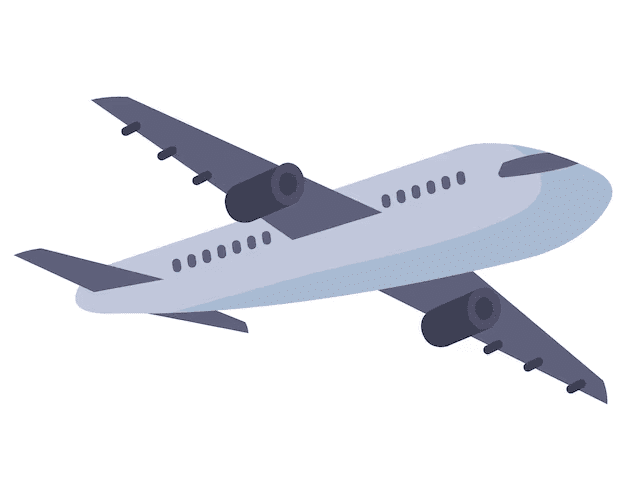
(ii) Which mode of transport can fly in the sky?
(a) Car
(b) Boat
(c) Airplane
(d) Bicycle
(iii) Which mode of transport is used in water bodies like rivers and seas?
(a) Bus
(b) Train
(c) Ship
(d) Scooter
(iv) What mode of transport can you ride on two wheels?
(a) Bus
(b) Motorcycle
(c) Train
(d) Truck
(v) Which mode of transport is pulled by horses and can be seen on the roads?
(a) Bicycle
(b) Helicopter
(c) Submarine
(d) Cart
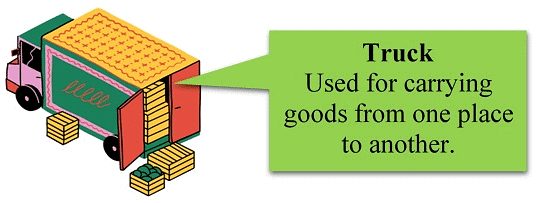
Match the Transport with Their Descriptions
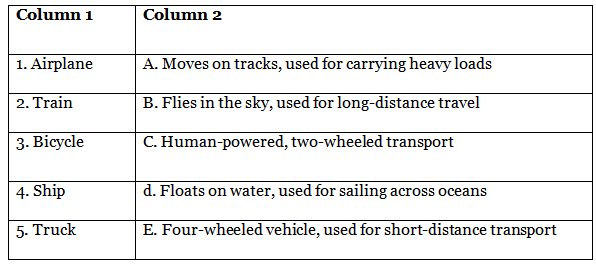
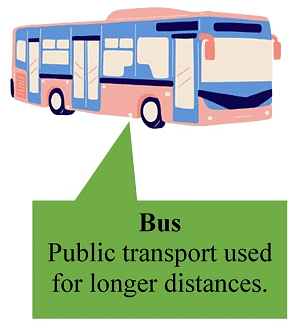
Fill in the Blanks
(Pick the correct word from the options in brackets)
(i) A __________ can travel in the sky and carry people to different places. (airplane / train / ship)
(ii) A __________ is a small vehicle with two wheels that you can pedal to move. (motorcycle / bicycle / scooter)
(iii) A __________ is a large water vessel that sails on oceans and seas. (boat / submarine / ship)
(iv) A __________ is a vehicle with four wheels, used for transporting goods. (truck / bus / car)
(v) A __________ runs on tracks and carries passengers from one station to another. (bus / train / tram)
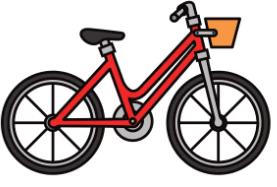
TRUE or FALSE
(Write TRUE or FALSE for given statements(i) A bicycle has four wheels.
(ii) Ships are used for traveling on land.
(iii) An airplane can fly high in the sky.
(iv) Trains run on water.
(v) Trucks are used for carrying goods.
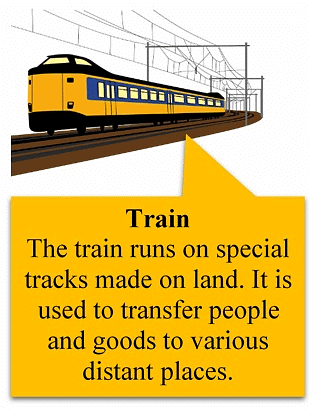
Answer in One Sentence
(i) Name two modes of transport that can travel on water.
(ii) What is the purpose of an ambulance?
(iii) How is a helicopter different from an airplane?
(iv) Why is a bicycle considered an eco-friendly mode of transport?
(v) What safety measures should you follow when riding in a car?
You can access the solutions to this worksheet here.
|
33 videos|215 docs|44 tests
|
FAQs on Means of Transport - 2 Class 1 Worksheet EVS
| 1. What are the different types of transport mentioned in the worksheet? |  |
| 2. How can I match transport modes with their descriptions effectively? |  |
| 3. What activities can I do to learn more about means of transport? |  |
| 4. Why is it important to learn about different means of transport? |  |
| 5. How can I prepare for questions related to means of transport in exams? |  |















